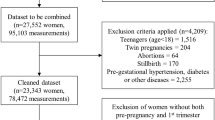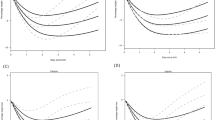Abstract
OBJECTIVE:
Reductions in prevalence of low birth weight (LBW) are likely to be achieved only through small increments, amplifying the importance of precision of measurement. This study compared two instruments for measuring birth weight to investigate the effect of instrument precision on estimates of LBW prevalence.
STUDY DESIGN:
Analysis was based on 497 infants born to mothers enrolled in an ongoing community-based trial of the effect of umbilical cord and skin antisepsis on neonatal mortality in Nepal. For each child, two birth weight measurements were recorded within 72 hours after delivery using weighing scales of differing precisions (100 vs 2 g).
RESULTS:
While continuous measures between the two instruments were similar, the prevalence of LBW among lower precision measurements (30%) was 11.3% lower than for higher precision measurements (34%). The difference in precision between the instruments accounted for 96% of the difference in LBW prevalence estimates.
CONCLUSIONS:
Differences in estimated LBW rates may be entirely due to differences in instrument precision. Conclusions concerning programmatic or research intervention impact, or comparisons of rates across populations should consider the effect of instrument precision on estimates of LBW.
This is a preview of subscription content, access via your institution
Access options
Subscribe to this journal
Receive 12 print issues and online access
$259.00 per year
only $21.58 per issue
Buy this article
- Purchase on Springer Link
- Instant access to full article PDF
Prices may be subject to local taxes which are calculated during checkout
Similar content being viewed by others
References
World Health Organization. Low Birth Weight. A Tabulation of Available Information. WHO/MCH/92.2. Geneva: WHO; 1992.
Macdonald PD, Ross SR, Grant L, Young D . Neonatal weight loss in breast and formula fed infants. Arch Dis Child Fetal Neonatal Ed. 2003;88:F472–F476.
Marchini G, Fried G, Ostlund E, Hagenas L . Plasma leptin in infants: relations to birth weight and weight loss. Pediatrics 1998;101:429–432.
Wright CM, Parkinson KN . Postnatal weight loss in term infants: what is “normal” and do growth charts allow for it? Arch Dis Child Fetal Neonatal Ed. 2004;89:F254–F257.
Pawar SD, Patil AV, Pratindhi AK . Retrospective prediction of birth weight by growth velocity curves during neonatal period. Indian J Pediatr 1996;63:385–392.
Enzunga A, Fischer PR . Neonatal weight loss in Zaire. Ann Trop Paediatr 1990;10:159–163.
Arifeen SE, Black RE, Caulfield LE, Antelman G, Baqui AH, Nahar Q, Alamgir S, Mahmud H . Infant growth patterns in the slums of Dhaka in relation to birth weight, intrauterine growth retardation, and prematurity. Am J Clin Nutr 2000;72 (4):1010–1017.
Author information
Authors and Affiliations
Rights and permissions
About this article
Cite this article
Mullany, L., Darmstadt, G., Katz, J. et al. Effect of Instrument Precision on Estimation of Low Birth Weight Prevalence. J Perinatol 25, 11–13 (2005). https://doi.org/10.1038/sj.jp.7211209
Published:
Issue Date:
DOI: https://doi.org/10.1038/sj.jp.7211209
This article is cited by
-
Effect of birthweight measurement quality improvement on low birthweight prevalence in rural Ethiopia
Population Health Metrics (2021)



